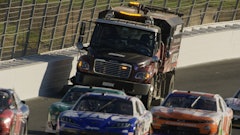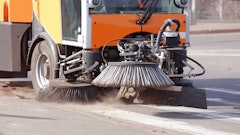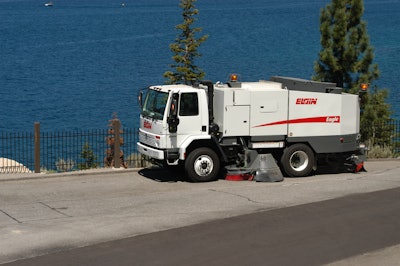
Have you heard the phrase you wouldn’t take a knife into a gun fight? While that might not be the exact correlation here for pavement maintenance contractors and their sweepers, it’s still important to ensure you’re taking the right sweeper out with you to complete certain jobs.
“When purchasing a street sweeper, the single most important consideration is choosing the right sweeper for the application and for the specific street and debris conditions – and configuring the selected sweeper correctly per the customer’s application,” says James Crockett sweeper products manager, Elgin Sweeper. “I can’t emphasize enough the importance of determining your prevailing needs in terms of debris removal, maneuverability, transport speed, and off-loading requirements when purchasing a street sweeper.”
In previous years, new sweepers were typically only purchased to replace existing equipment if needed. This would lead to traditionally mechanical sweeper customers exploring less costly alternatives, such as air sweepers, in hopes of purchasing sweepers at a significantly reduced price. This move to less costly alternatives often lead to customers’ ultimate dissatisfaction with the performance of the sweepers when used in the wrong applications, which has a lot to do with the customers’ lack of familiarity with the sweeper technology.
For example, mechanical sweepers are ideal for picking up construction debris and granular materials such as millings and gravel, while regenerative air sweepers are ideal for picking up garbage, leaves, pine cones, pine needles, silt and sand. Use the wrong sweeper on a milling job and your customer is not going to be happy with your work.
"No two competitive sweeper models are designed exactly the same," says John Paraschak vice president of sales & marketing at Stewart-Amos. "Each have their own unique design features and performance capabilities."
"I can't stress that enough," says Tom Rokas with Tymco. "There is a difference between each model from each manufacturer and contractors should really do their homework before making a purchase."
Sweeper Type Snapshot
In order to make an educated decision on what sweeper you need, it’s a good idea to start with an overview of what sweeping options are available and what those sweepers will work best for.
- Mechanical sweepers. The mechanical broom sweeper is the most common type of sweeper in the United States, and is ideal for sweeping construction debris and granular materials like millings, gravel and the heavy build-up encountered after flooding or even yearly spring cleanup.
- Regenerative air sweepers. The second most common type of sweeper in the United States is the regenerative air sweeper. The standard regenerative air sweeper is typically used for most municipal applications on streets, parking lots and some alley ways. These models can sweep the different applications of cleaning highways, streets, roadways, construction sites, airport roads and runways, parking lots, and industrial plant facilities. The debris found on these surfaces can range from dirt, gravel, rock, sand, leaves, litter, millings, etc. depending on the application or season being swept. The large pick-up head and gutter brooms accommodate most of the debris found on the various paved surfaces.
- Waterless dust control mechanical sweepers. These type of sweepers are starting to be required by many municipalities in order to meet rigorous environmental specifications, such as air pollution. In states such as California, Texas and Oklahoma, where water conservation is a crucial issue, there has been a sharp increase in the purchase and use of waterless dust control sweepers.
- Reduced water dust control regenerative sweepers. Regenerative air sweepers provide the efficiencies and simplicity of regenerative technology, while positively capturing much of the fine dust that circulates through the regenerative loop. Capturing this dust allows significantly less or no water to control ambient dust and lubricate the impeller.
- Vacuum sweepers. The use of pure vacuum sweepers in the United States trails behind mechanical and regenerative air sweepers. However, this type of sweeper provides the most efficient removal of material directly under the suction nozzles, typically resulting in up to a 99% removal of all particles. Because pure vacuum sweepers only use energy in the suction direction, the pressure discharge side simply vents to the atmosphere.
What Sweeper to Choose
Next you need to decide what you are going to be using the sweeper for. Below are some general recommendations from Elgin on the sweeping application and what sweeper to choose.
Year-round street sweeping
Mechanical sweepers and waterless dust control sweepers are great for cold climates requiring year-round sweeping of sand, gravel, silt, salt residue and other materials. Where dust is a problem, or where dried sand and salt may result in dust when sweeping, waterless sweepers with dust control are an excellent option.
Spring cleanup and heavy-duty sweeping
Mechanical sweepers are best for cleanup of the sand, gravel, silt and salt that often accumulate in cold, Northern climates after a winter of reduced sweeping. Mechanical sweepers are also ideal for conveying large quantities of heavy material.
Leaf removal and pine cone sweeping
Mechanical sweepers and regenerative air sweepers have a wide pick-up head with a large diameter suction hose and ability to raise/lower the head hydraulically to sweep street gutters filled with leaves, pine cones and pine needles.
Catch-basin cleaning
Regenerative air sweepers and pure vacuum sweepers allow for the precision needed when sweeping catch basins. Street sweeping and catch-basin cleaning require the ability to lift leaves, silt, sand, gravel and litter out of the catch basin. Regenerative air sweepers and pure vacuum sweepers are perfect for combination sweeper and catch-basin cleaning, if equipped with a boom-style hose or catch basin cleaning hose feature.
Porous pavement cleaning and maintenance
Regenerative air sweepers and pure vacuum sweepers are also needed on porous pavements. These surfaces have been growing at a double-digit rate the last several years as a best management practice (BMP) to deal with storm water runoff. Both regenerative air sweepers and high power vacuum sweepers can be used in a practical maintenance program for porous pavement. A high-power vacuum sweeper is also recommended for porous pavement restoration projects.
Airport cleaning and maintenance
Regenerative air sweepers are used in airports for sweeping roadways, taxi-ways and runways to keep foreign object debris (FOD) from damaging aircraft. This is just another application of Regenerative Air Sweepers how the product is used for cleaning paved areas in a particular environment.
When NOT to Use Certain Sweepers
No matter what type of sweeper you buy, it’s important to know where not to take these sweepers if you want to keep your customers happy.
While mechanical street sweepers can tackle tough road conditions and are effective for sweeping large amounts of debris ranging in size from fine dust particles to heavy sand, millings and large bulky objects, they should not be used for performing routine cleaning of porous pavement and permeable surfaces because the broom bristles are not effective at dislodging the fine silt that accumulates in the joint/pores of these surfaces. Mechanical sweepers are also not sensitive to high street crowns or rough, damaged street surfaces.
"Mechanicals shouldn't be used to routinely sweep very fine material as the main broom bristle will find it difficult to effectively reach fines deep in the surface pores," Paraschak says.
Roadways with inconsistencies are better served by pure vacuum sweepers. On a typical rough and potholed roadway, pure vacuum sweepers will capture and keep more particulates out of the air. A pure vacuum sweeper—with an extended nozzle that can reach the curb— is ideal for efficient street gutter cleaning to such debris as dirt, gravel, sand, leaves, organics and small pieces of asphalt, bricks, and concrete.
While vacuum sweepers efficiently removal of material directly under the suction nozzles, because of the high-power density nozzle design, the suction nozzle entrance area on a pure vacuum sweeper limits the size of debris to dirt, gravel, sand, leaves, organics and small pieces of asphalt, bricks and concrete.
"Dust sensitive areas are also not suited for vacuum sweepers because air is exhausted directly to atmosphere from the fan," Paraschak says.
When using a regenerative air sweeper, a vacuum enhancer valve is frequently used with them to limit the amount of air volume recirculated through the blast nozzle. This causes the air pressure under the sweeping head to move from balanced flow to vacuum. Increasing the sweeping head’s vacuum level assists in picking up litter, leaves, and other light debris which could be missed with these type of sweepers.
However, regens lose suction and cleaning performance any time the pick-up head breaks surface contact. "If the surface is extremely rough and irregular, you may be better off with a straight vacuum unit or mechanical broom unit," Paraschak adds.
Waterless dust control sweepers pick up bulky material down to fine particles without using water for dust control, enabling them to be used for sweeping in freezing weather or industrial applications such as removing water-reactive compounds like cement. However, since they have both mechanical systems and a fan/filter system, waterless dust control sweepers can be more costly and complex to maintain than mechanical-only sweepers.
While not completely waterless, filtered regenerative air sweepers provide the efficiencies and simplicity of regenerative technology. These sweepers positively capture much of the fine dust that often continues to circulate through the regenerative loop, allowing for significantly less water to control ambient dust and lubricate the impeller. Because these sweepers have a fan/filter system, they can also be more costly and complex to maintain than regenerative-only sweepers.
"Air sweepers require more power to operate which requires more fuel (higher costs)," Paraschak says. "Air units also have difficulties meeting the PM 10 air quality standards. To get your cleaning jobs done correctly, on-time and in the most cost effective manner possible you need to select right tools for the right jobs every time."



![Pavement Awards 2025[main]](https://img.forconstructionpros.com/files/base/acbm/fcp/image/2024/05/PavementAwards_2025_main_.665883e4276e8.png?auto=format%2Ccompress&bg=fff&fill-color=fff&fit=fill&h=100&q=70&w=100)
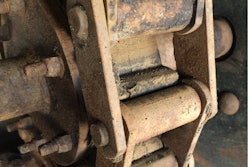
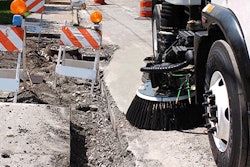
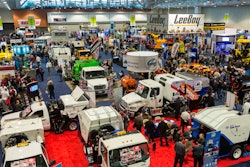





![Pavement Awards 2025[main]](https://img.forconstructionpros.com/files/base/acbm/fcp/image/2024/05/PavementAwards_2025_main_.665883e4276e8.png?ar=16%3A9&auto=format%2Ccompress&bg=fff&fill-color=fff&fit=fill&h=135&q=70&w=240)



